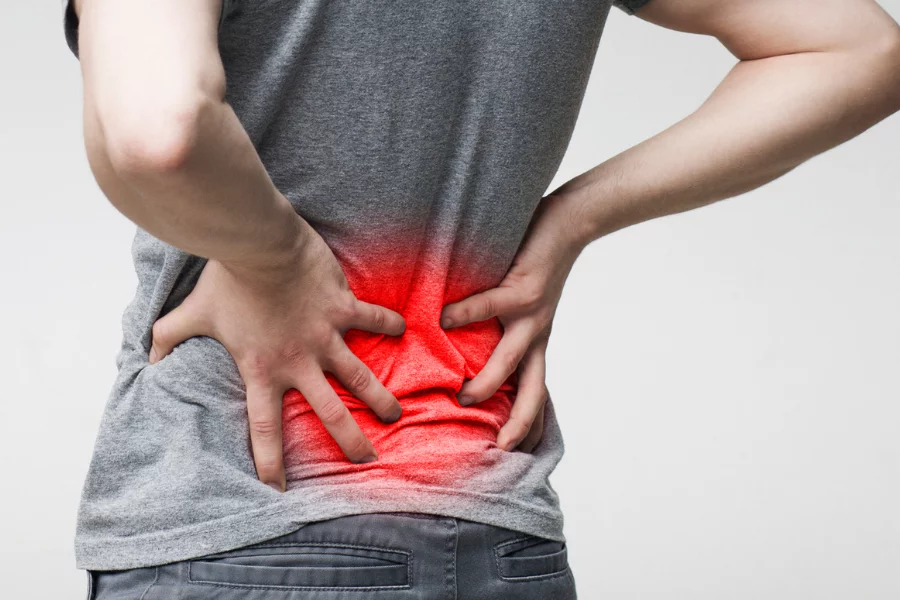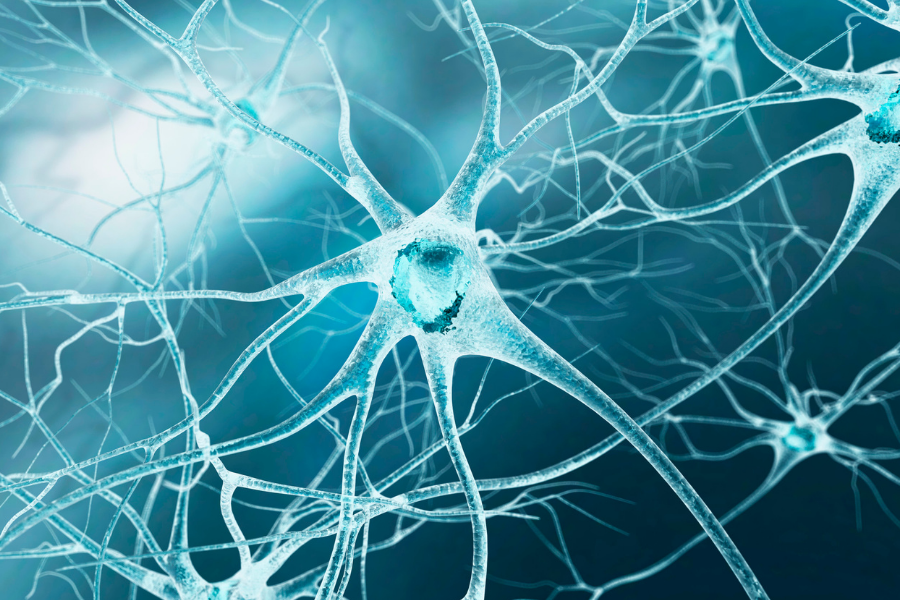
Back pain plagues an overwhelming amount of the U.S. adult population, with over 31 million Americans struggling with lower back pain at any given moment in the day, and experts estimate that up to 80 percent of the U.S. population is going to or has experienced back pain at some point in their lives. Worldwide, back pain continues to be the leading cause of disability, and it accounts for the loss of 264 million workdays in a year.
As serious as it is, back pain is not the result of some terrible epidemic or the growing onset of disease. Most back pain cases are brought on through normal everyday living circumstances and aging. Most cases of back pain are not caused by cancer, fractures, injuries, or inflammatory arthritis (although each of these issues can cause or aggravate existing back pain). Thankfully, back pain usually goes away. But for the unfortunate few souls where it doesn’t remain temporary, back pain can evolve into a debilitating and chronic condition.
One of the more common varieties of back pain experienced by adults today is sciatica. And while sciatica can become chronic, it does come and go-getting worse throughout certain hours of the day and improving with certain activities. Many Americans find that their sciatica becomes drastically worse in the mornings right out of bed – but few know that there are ways to prevent your sciatica from being particularly painful in the morning. To understand why sciatica is worse in the morning, it’s important to know what sciatica is and how certain positions and activities might aggravate it.
What Is Sciatica?
Sciatica is a condition that can cause pain in your lower back and legs. It is caused by pressure on the sciatic nerve, which runs from your lower back to your feet. sciatica can be caused by a variety of things, including a herniated disc, spinal stenosis, and pregnancy. Treatment for sciatica may include rest, ice, and heat therapy, as well as exercises to stretch and strengthen the muscles in your back and legs. If you have sciatica, it is important to learn how to identify the signs and symptoms so that you can seek treatment early and get relief from the pain.
Symptoms of sciatica include pain that radiates from the lower back all the way down to the legs, numbness or tingling in the legs and weakness in the legs. Sciatica can be extremely painful and debilitating, making it difficult to walk or even stand.
Sciatica is a condition caused by a pinching of the sciatic nerve, which begins at the base of the spine and travels down through the hips and thighs. The sciatic nerve is the body’s longest nerve and branches off throughout much of our lower body.
The sciatic nerve can be pinched for several different reasons, from an injury or a tumor to spending too much time in a certain position, irritating or inflaming the muscles around the base of the spine, or suffering from weakening or degenerative discs due to aging or a bone-related illness.
Diagnosing Sciatica
Because sciatica has a wide variety of symptoms, it can only accurately be diagnosed by a medical professional who can verify that the origin of your pain is a compression of the sciatic nerve, and not a similar but unrelated nerve or muscle issue. Not all pain in the leg and lower back can be traced back to sciatica, but because the sciatic nerve is so large and the lower portion of the spine is so easily compromised (especially for Americans with a sedentary lifestyle or years of demanding physical labor), sciatica has become incredibly common among back pain sufferers.
Thankfully, sciatica usually resolves itself. Given proper rest and the repeated application of various therapeutic techniques to resolve pressure from the nerve (from stretches and massages to observing better posture and avoiding positions that aggravate the pain), the compression on the nerve can be resolved and the inflammation around the sciatic nerve is ultimately reduced back to normal. But the trouble for many is that they’re actually aggravating their sciatica when they least expect to: while sleeping.
What is the Sciatic Nerve?
The sciatic nerve is the longest nerve in the body, and it runs from the lower back all the way down to the legs. The sciatic nerve is responsible for carrying messages from the brain to the legs, and when it is compressed or irritated, it can cause pain, numbness, and tingling in the legs.
With Sciatica the sciatic nerve is compressed or irritated, and it can be very painful. A herniated disc, spinal stenosis, or a tumor can cause sciatica. Treatment for sciatica depends on the underlying cause, but it often includes pain medication, physical therapy, and surgery.
What are some common causes of Sciatica?
There are a number of different things that can cause sciatica, including a herniated disc, spinal stenosis, and piriformis syndrome. A herniated disc is a disc in the spine that has ruptured or slipped out of place, and this can cause sciatica by putting pressure on the sciatic nerve. Spinal stenosis is a condition in which the spinal canal becomes narrowed, and this can put pressure on the sciatic nerve. Piriformis syndrome is a condition that is caused by compression of the sciatic nerve by the piriformis muscle.
What are the Symptoms of Sciatica?
The symptoms of sciatica can vary from person to person, but they typically include pain that radiates from the lower back all the way down to the legs, numbness or tingling in the legs and weakness in the legs. Sciatica can be extremely painful and debilitating, making it difficult to walk or even stand.
Treating Sciatica
There are a number of different ways to treat sciatica, including lifestyle changes, medications, and surgery. Lifestyle changes may include things like quitting smoking, losing weight, and reducing stress. Medications can include over-the-counter pain relievers as well as prescription medications. Surgery may be needed if other treatments have failed to provide relief.
If you think you may be suffering from sciatica, it is important to see a doctor right away. There are a number of treatments available for sciatica, and the sooner you start treatment, the better your chances of getting relief from the pain.
Diagnosing Sciatica
Sciatica is typically diagnosed based on the symptoms. Your doctor will ask you about your symptoms and may order imaging tests, such as an MRI, to confirm the diagnosis.
Prevent sciatica
There are a number of things you can do to reduce your risk of developing sciatica, including maintaining a healthy weight, quitting smoking, and exercising regularly. If you already have sciatica, there are a number of things you can do to manage the pain and prevent it from getting worse, including using heat or ice to relieve pain, practicing yoga or stretching, and taking over-the-counter pain relievers.
Reduce Risk
There are a number of things you can do to reduce your risk of developing sciatica, including maintaining a healthy weight, quitting smoking, and exercising regularly. If you already have sciatica, there are a number of things you can do to manage the pain and prevent it from getting worse, including using heat or ice to relieve pain, practicing yoga or stretching, and taking over-the-counter pain relievers.
If you think you may be suffering from sciatica, it is important to see a doctor right away. There are a number of treatments available for sciatica, and the sooner you start treatment, the better your chances of getting relief from the pain.
There are a number of different ways to treat sciatica, including lifestyle changes, medications, and surgery. Lifestyle changes may include things like quitting smoking, losing weight, and reducing stress. Medications can include over-the-counter pain relievers as well as prescription medications. Surgery may be needed if other treatments have failed to provide relief.
Living with Sciatica
Living with sciatica can be difficult, but there are a number of things you can do to manage the pain and make your life more comfortable. Here are some tips:
– Use heat or ice to relieve pain.
– Practice yoga or stretching.
– Take over-the-counter pain relievers.
– Avoid activities that aggravate the pain.
– See a doctor if the pain is severe or does not go away.
Ergonomic Pillow
While not a permanent fix, one way to relieve some of the tension in the back is to place an ergonomic pillow between your knees and to pull your top knee closer towards your chest while dropping the other knee. This will allow your spine to straighten and your hips to shift in such a way that there is less pressure on the nerves in the lower back.
If you can find a way to sleep on your back, however, then try to monitor your sleep and remain on your back throughout the night. Keep a few pillows under your knees, lifting them off the top of the bed and allowing your hips to shift under, so your spine is elongated as you sleep. A futon or a padded yoga mat on the floor might even help you further reduce your pain if you make sure to keep your hips squared and your spine long (by using a pillow between/under your knees).
Sleep is Vital
It’s important to maintain a healthy sleep regimen as well, not only to avoid back pain but to improve your overall mood both in the morning and throughout the day. Many Americans struggle to fall asleep and many more struggles to get a good night’s sleep due to a variety of unhealthy habits before bed, including TV or video gaming, browsing social media in bed, or spending too much time before bed staring at a screen.
Try and avoid the bed outside of going to sleep, so your body equates heading to bed with getting drowsy. Consider a warm drink before bed to help you relax and adopt a sleeping ritual that helps you prepare for sleep, like a quick 5-minute stretch, a soothing track, mood lighting, scented candles, and more.
Sciatic Pain Is Worse in the Morning
If you’re waking up in worse pain than the night before, your sleeping habits are aggravating your sciatica by placing undue stress on the sciatic nerve. A common issue that promotes sciatica at night is sleeping in a fetal or curled position, as this causes the vertebrae in the lower back to continue pinching the nerve, causing shooting pain in the lower back or down the buttocks/legs the next morning.
Pregnant women are at particular risk for developing sciatica as a result of certain sleeping and postural habits, due to the immense pressure put on the spine and the muscles in the back by the weight of a developing fetus in the womb.
If you tend to sleep on your side, chances are that your sleeping habits may prevent your symptoms from improving. Because the human body isn’t shaped like a rectangle; our hips and shoulders make first contact with the bed when laying on our side, causing our spine to curve to compensate. Ultimately, side-sleeping can cause an inflamed nerve to be further compressed.
Exercises to Relieve Sciatic Nerve Pain
There are a number of exercises you can do to relieve sciatic nerve pain. Here are a few:
– Hamstring stretch: Sit on the floor with your legs straight out in front of you. Reach for your toes and hold the stretch for 30 seconds.
– Gluteal stretch: Lie on your back with one knee bent and the other leg flat on the floor. Grab the bent knee and pull it towards your chest. Hold the stretch for 30 seconds.
– Piriformis stretch: Lie on your back with both legs flat on the floor. Cross one ankle over the opposite knee and pull that knee towards your chest. Hold the stretch for 30 seconds.
Resources for Sciatica Pain
If you are suffering from sciatica, there are a number of resources that can help you find relief. Here are a few:
– The American Academy of Orthopaedic Surgeons: This website offers information on sciatica, including causes, symptoms, and treatment options.
– The American Chiropractic Association: This website offers information on sciatica, including causes, symptoms, and treatment options.
– The National Institute of Neurological Disorders and Stroke: This website offers information on sciatica, including causes, symptoms, and treatment options.

Child’s Pose
Early Morning Pain Relief
Improving your sleeping habits is one way to reduce the pain of sciatica when waking up. If you continue to feel pain the next morning then you may be able to improve your condition with a few simple stretches. Start by kneeling on a mat and adopting the child’s pose, before going into a lumbar extension.
Roll onto your back. Gently relieve pressure in your lower back by twisting your hips while keeping your shoulders on the ground in a Russian twist. Elongate the spine and stretch the hip flexors, gluteus maximus, and piriformis muscles by pulling your knee to your chest while keeping your other leg straight.
Seek Medical Help
When all else fails, don’t be afraid to talk to your doctor. Pain management solutions for sciatica extend far beyond the prescription of medication, and your doctor may be able to help bring you relief through alternative treatments and specialized exercises, or further inspect your condition and discover a different underlying cause.
Take the First Step Towards Pain-Free Living Today





